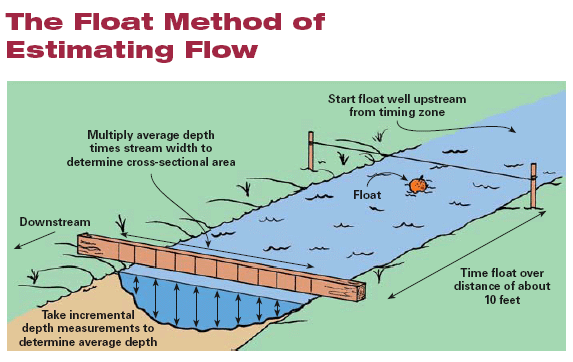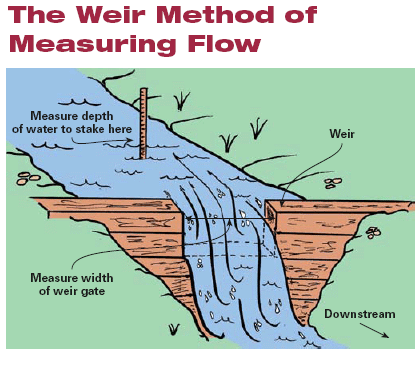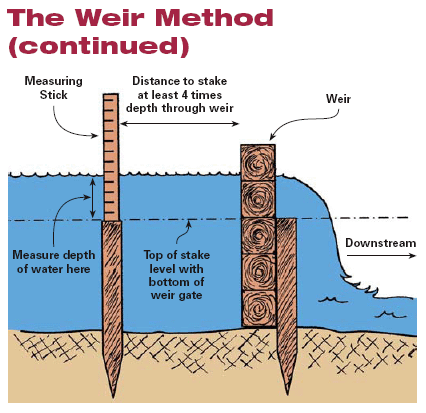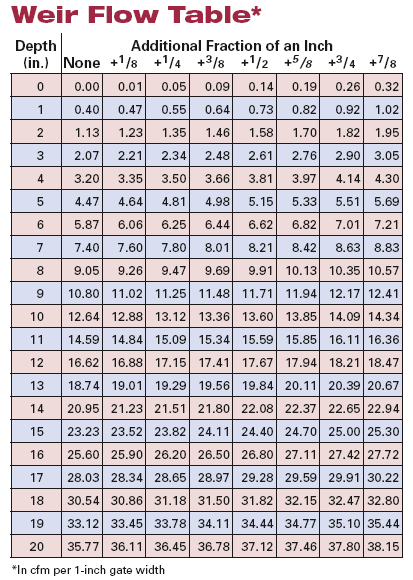Before you decide to choose your water turbines, you need to measure the water flow of micro hydro power plant.
But how do we measure the water flow of your hydro site?
Today we are introducing to you how to measure water flow?
Contents
Measuring Water Flow
The second major step in evaluating your site’s hydro potential is measuring the flow of the stream. Stream levels change through the seasons, so it is important to measure flow at various times of the year. If this is not possible, attempt to determine various annual flows by discussing the stream with a neighbor, or finding U.S. Geological Survey flow data for your stream or a nearby larger stream. Also keep in mind that fish, birds, plants, and other living things rely on your stream for survival. Never use all of the stream’s water for your hydro system.
Flow is typically expressed as volume per second or minute. Common examples are gallons or liters per second(or minute),and cubic feet or cubic meters per second(or minute).Each can be easily converted to another,as follows:
1 cubic foot = 7.481 gallons
1 cubic meter = 35.31 cubic feet
1 cubic meter = 1,000 liters
Three popular methods are used for measuring flow—container, float, and weir. Each will be described in detail below.
Container Fill Method
The container fill method is the most common method for determining flow in micro hydro systems.Find a location along the stream where all the water can be caught in a bucket.If such as pot doesn’t exist,build a temporary dam that forces all of the water to flow through a single outlet.Using a bucket or larger container of a known volume,use a stopwatch to time how long it takes to fill the container. Then divide the container size by the number of seconds.
For example, if your container is a 5-gallon paint bucket and it takes 8 seconds to fill, your flow is 0.625 gallons per second (gps) or 37.5 gallons per minute (gpm).
Float Method
The float method is useful for large streams if you can locate a section about 10 feet (3 m) long where the stream is fairly consistent in width and depth.
Step1.Measure the average depth of the stream. Select a board able to span the width of the stream and mark it at 1-foot(0.3m) intervals. Lay the board across the stream, and measure the stream depth a teach 1-foot interval. To compute the average depth, add all of your measurements together and divide by the number of measurements you made.
Step2.Compute the area of the cross-section or just measured by multiplying the average depth you just computed by the width of the stream. For example, a 6-foot-wide stream with an average depth of 1.5 feet would yield a cross-sectional area of 9 square feet.
Step 3.Measure the speed. A good way to measure speed is to mark off a 10-foot (3 m) length of the stream that includes the point where you measured the cross-section. Remember, you only want to know the speed of the water where you measured the cross-section, so the shorter the length of stream you measure, the better.
Use a weighted float that can be clearly seen—an orange or grapefruit works well. Place it well upstream of your measurement area, and use a stopwatch to time how long it takes to travel the length of your measurement section. The stream speed probably varies across its width, so record the times for various locations and average them.

Weir Method
A weir is perhaps the most accurate way to measure small- and medium-sized streams. All the water is directed through an area that is exactly rectangular, making it very easy to measure the height and width of the water to compute flow.
This kind of weir is a temporary dam with a rectangular slot, or gate. The bottom of the gate should be exactly level, and the width of the gate should allow all the water to pass through without spilling over the top of the dam. A narrower gate will increase the depth of the water as it passes through, making it easier to measure.
The depth measurement is not taken at the gate itself because the water depth distorts as it moves through the gate. Instead, insert a stake well upstream of the weir gate and make the top of the stake exactly level with the bottom of the weir gate. Measure the depth of the water from the top of the stake.
Once the width and depth of the water are known, a weir table is used to compute the flow. The weir table shown here is based on a gate that is 1 inch (25 mm) wide. Simply multiply the table amount by the width (in inches) of your gate. For example, assume your weir gate is 6 inches wide, and the depth of the water passing over it is 71/2 inches. On the left side of the table, find “7” and move across the row until you find the column for “+1/2”. The table shows 8.21cfm flow for a 1-inch gate with 71/2 inches of water flowing through it. Since your gate is 6 inches wide, simply multiply the 8.21 by 6 to get 49.26 cfm.
A weir is especially effective for measuring flow during different times of the year. Once the weir is in place, it is easy to quickly measure the depth of the water and chart the flow at various times.



Micro Hydro Power Plant
If your clients have a micro hydro power plant to build, you can come to their water site to measure the waterhead and water flow for them. When you have all the water data, send them to us by email. Our engineer will design and calculate the right hydro generator sizes for you. The most important is that you know how to measure flow? and how to measure waterhead.


